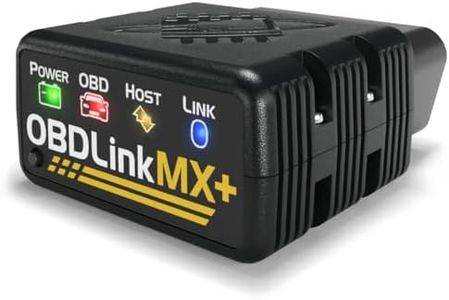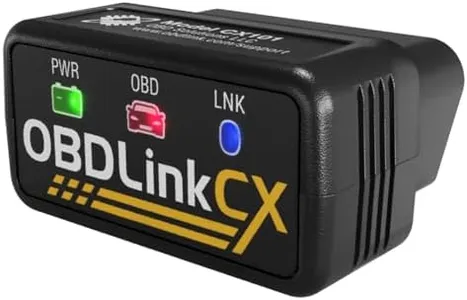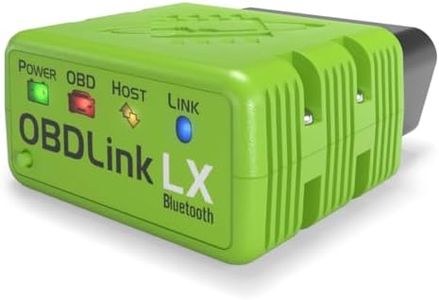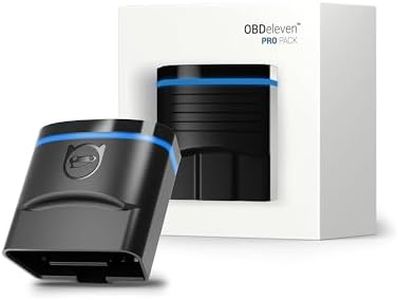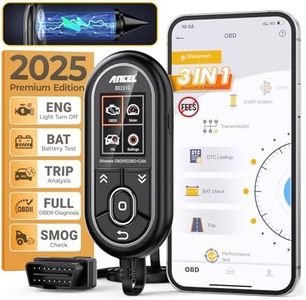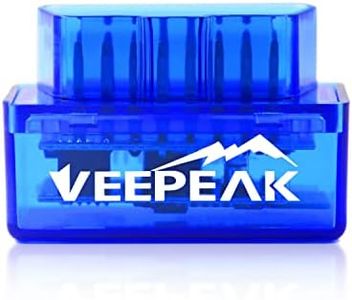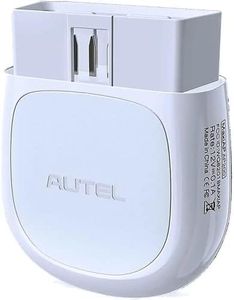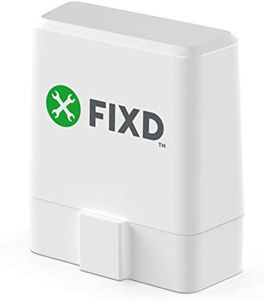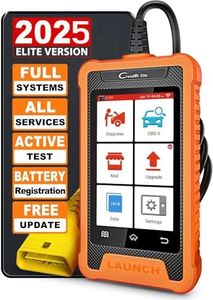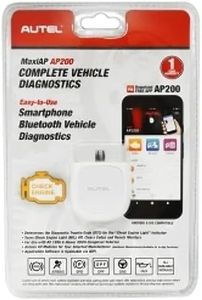We Use CookiesWe use cookies to enhance the security, performance,
functionality and for analytical and promotional activities. By continuing to browse this site you
are agreeing to our privacy policy
10 Best Obd 2 Bluetooth Scanner
From leading brands and best sellers available on the web.Buying Guide for the Best Obd 2 Bluetooth Scanner
When shopping for an OBD-2 Bluetooth scanner, your goal is to find a tool that helps you monitor, diagnose, and sometimes reset your car’s computer systems through your smartphone or tablet. Choosing the right one depends on your vehicle type, the tasks you want to accomplish, and the devices you plan to use. Understanding key features will help you match a scanner to your needs, making car diagnostics easier and more accessible.Compatibility (Vehicle and Apps)Compatibility refers to whether the scanner works with your specific vehicle and your smartphone operating system (iOS or Android) and apps. Some scanners support only certain car makes, models, or years, especially diesel or hybrid vehicles, and some apps are exclusive to one operating system. Check your car’s make and year; most OBD-2 scanners work with vehicles made after 1996, but it’s always smart to confirm. Make sure the app you intend to use runs smoothly on your phone or tablet. If you own multiple vehicles or plan to upgrade your phone, broad compatibility gives you more flexibility.
Supported ProtocolsProtocols are the communication languages that your car’s computer uses to send data to the scanner. While most modern scanners cover the standard OBD-2 protocols, some older or less common vehicles might require specific protocol coverage. Basic scanners handle the main protocols found in most cars from 1996 onwards, while advanced ones support additional manufacturer-specific protocols. The right choice depends on your car—if you have a standard make and model, basic is fine, but if you have a specialty or imported vehicle, ensure the scanner supports the necessary protocols.
Functionality (Features)The functionality of an OBD-2 Bluetooth scanner covers what the scanner can actually do. Basic models focus on reading and clearing fault codes, which is enough for many users. Intermediate models add data like real-time sensor monitoring and readiness tests, which are helpful if you want a better picture of your car’s health. Advanced models offer special functions like ABS/SRS system access, manufacturer-specific codes, or performance data. Pick a scanner based on your confidence level: If you’re a beginner, basic functions suffice for simple check-engine light problems; if you like digging deeper or do DIY repairs, more features will be useful.
App Interface and UsabilityThe app interface is how you interact with the scanner’s data, presented through your smartphone or tablet. Some scanners only work with specific apps, while others let you pick from a range of third-party apps. Simple, clear interfaces are better for beginners, while more detailed or customizable apps suit experienced users. If you value ease of use, look for user-friendly apps with intuitive layouts; if you want access to lots of details and data logging, apps with customizable dashboards will be more satisfying.
Connection Stability & Bluetooth VersionThe Bluetooth version affects how reliably the scanner connects to your mobile device and how fast data transfers. Newer Bluetooth versions provide stronger, more stable, and more energy-efficient connections. For older phones or tablets, ensure the scanner is backward compatible. For most users, stable, quick connections without drops matter most—choose scanners advertising strong, reliable Bluetooth performance, especially for regular use or if you often move between vehicles.
Size and Build QualitySize and build quality determine how easily and safely the scanner fits in your vehicle’s OBD-2 port, and how well it stands up to regular use. Compact designs are easier to leave plugged in, especially if you want live data while driving, while larger models might be better for occasional diagnostics. Sturdy, well-made cases are less likely to break or become loose, which matters if you unplug and store the scanner frequently. Choose a size that won’t interfere with your legroom or pedals, and good build quality if you plan on using it long term.
